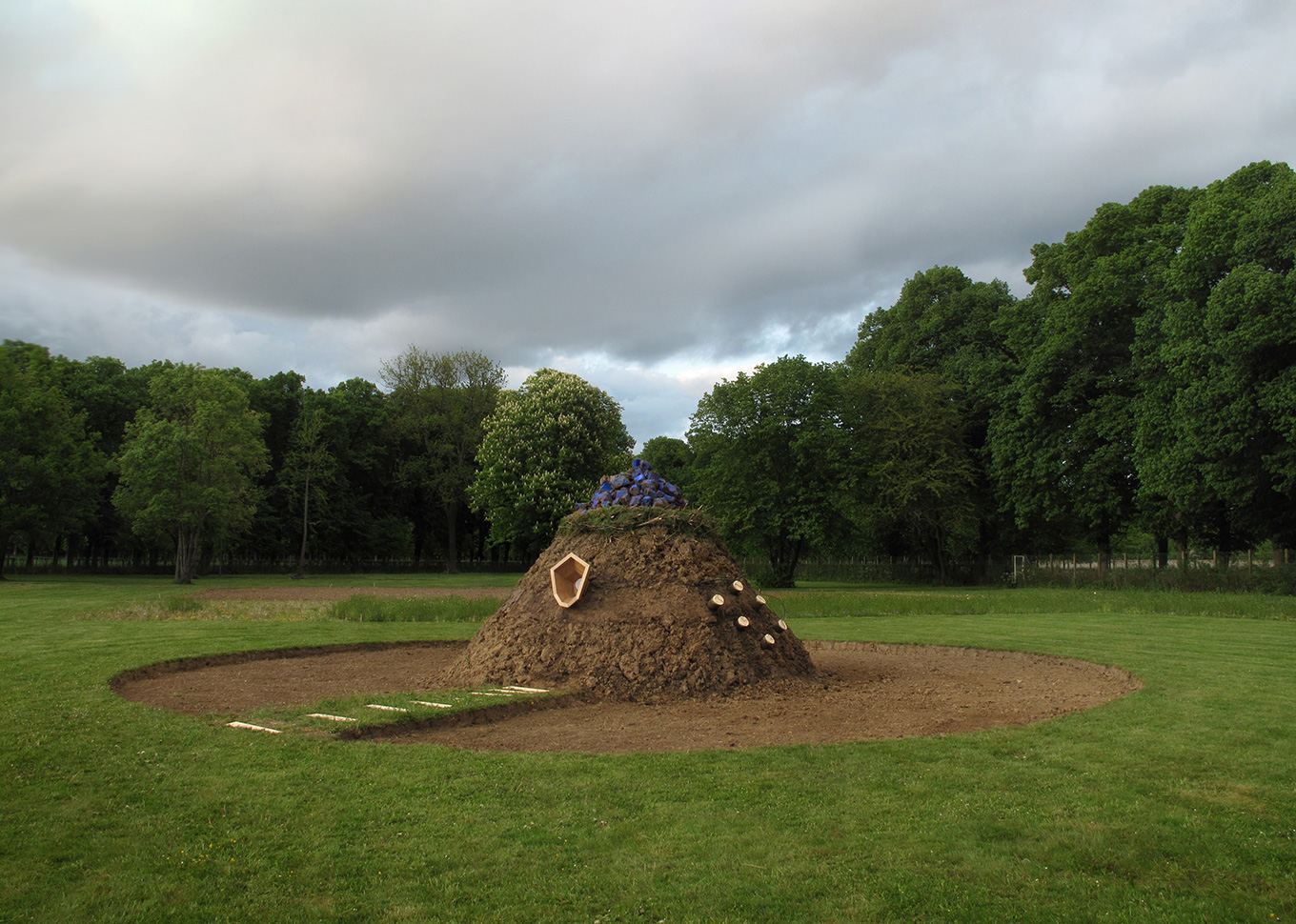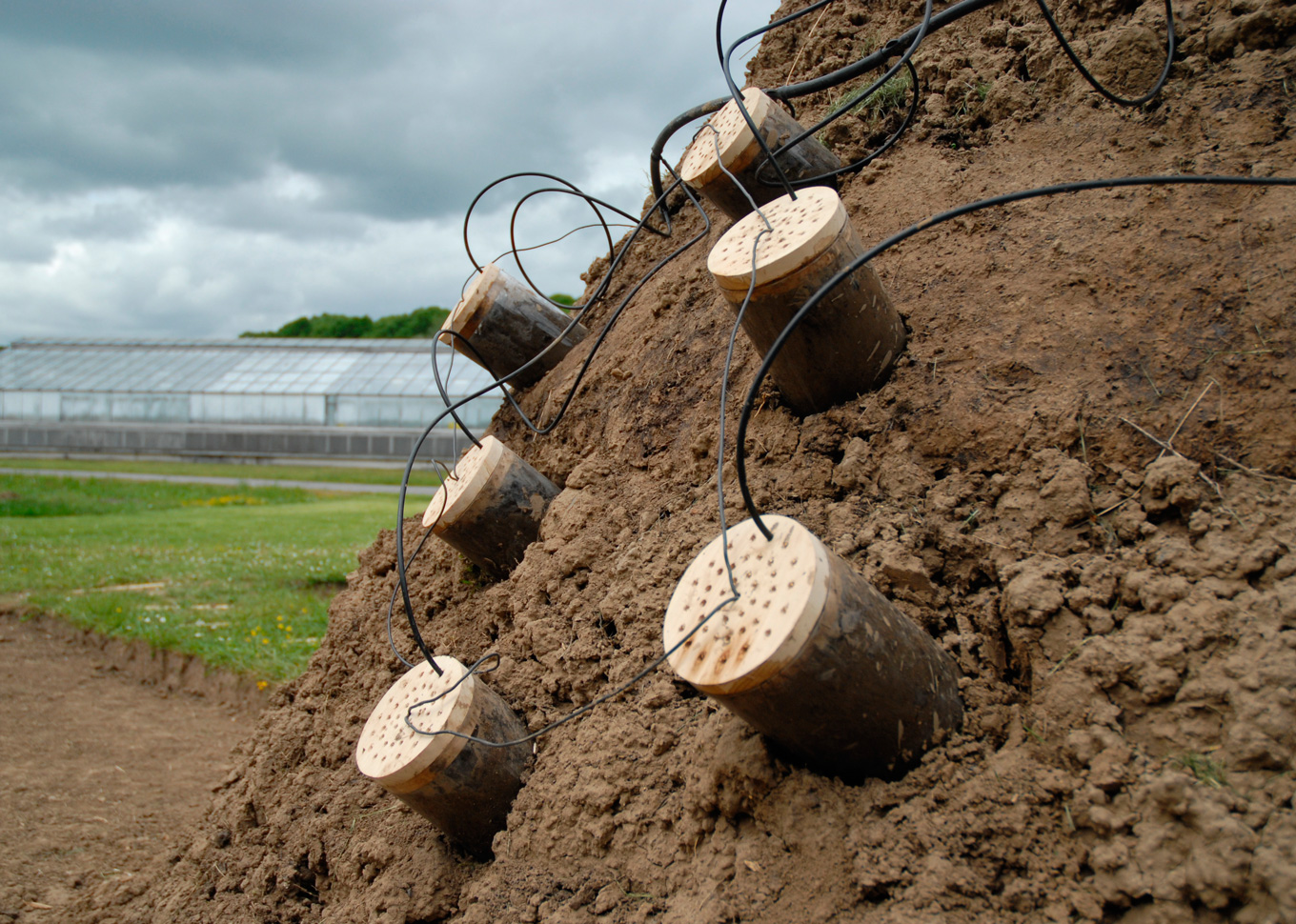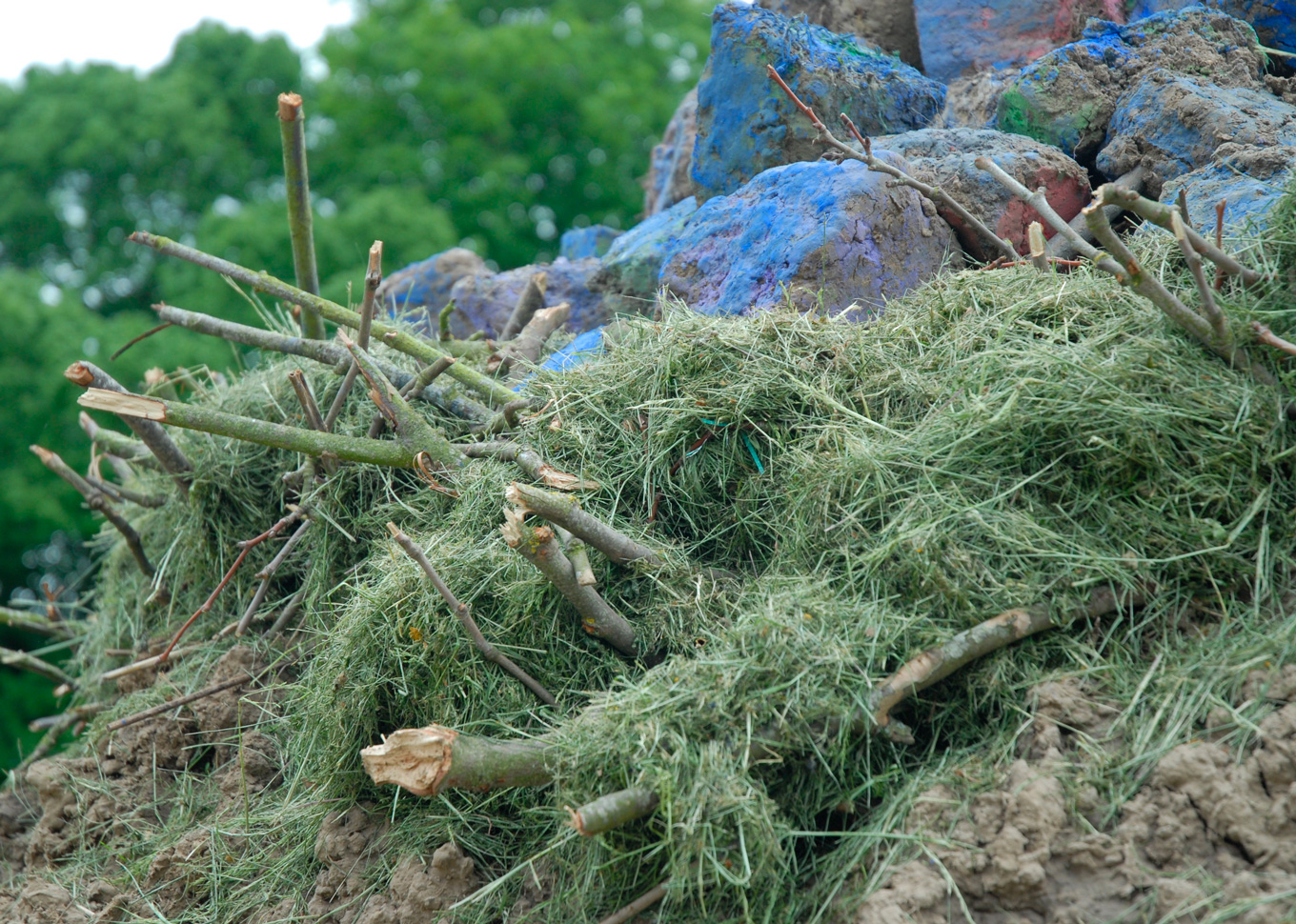
Monsieur Tas is an anthropomorphic expression of the energetic potential of the soil and its bacterial development. Inspired by the principle of bacterial batteries, the installation is composed of soil and nutrients taken directly from the plot (leaves, straw, branches), six soil batteries, an oak horn and a stainless steel funnel. Powered by the energy present in the earth, the horn diffuses and reveals the sound activity of the organic entities inhabiting the pile.

The project is inspired by Claude Bourguignon's theories and the observation that a long period of intensive agriculture has depleted the richness of the soil. In addition to challenging Claude Bourguignon's view of the earth as an inanimate medium requiring the use of fertilizers, he points out that far from being inert, soil contains 80% of the earth's biomass. His recommendations for the use of ramial fragmented wood and his observations of the micro-organic processes involved in decomposition set in motion a relationship with the soil that was a driving force in the creation of this installation. Our gesture, that of lending the archaic form of the heap an energetic and expressive device on the INRA site, situates a relationship of otherness with the soil. Whose energy potential is being revealed? So the encounter we wish to have today is that of a coincidence with an unknown that we are treading on, that of the micro-organic energy buried in the soil. It's the experience of entering into conversation (and therefore into knowledge) with an animated, extra-ordinary world and ecosystem that we're proposing here.





Dimensions: 15x15x3 m
Materials: earth, branches, oak, zinc, copper, glass, loudspeaker.
Prix Le Vivant et son énergie / Trophée de Gailly.
With thanks to Sylvie Pouteau, Paul Robillard and his architect/filmmaker friends: Guillaume Clément, Antoine Cartier, Clément Pelletier, Frédéric Mauclère, Julien Ladroue, AEF, Alexandra Devaux, Norent Saray-Delabar, Claire Aubadie-Ladrix (intern), Lorraine Verner, Catherine Schvartz, Cécile Morin.
Commissioned by INRA Versailles.
Project carried out as part of the action-research program Le vivant et son énergie.